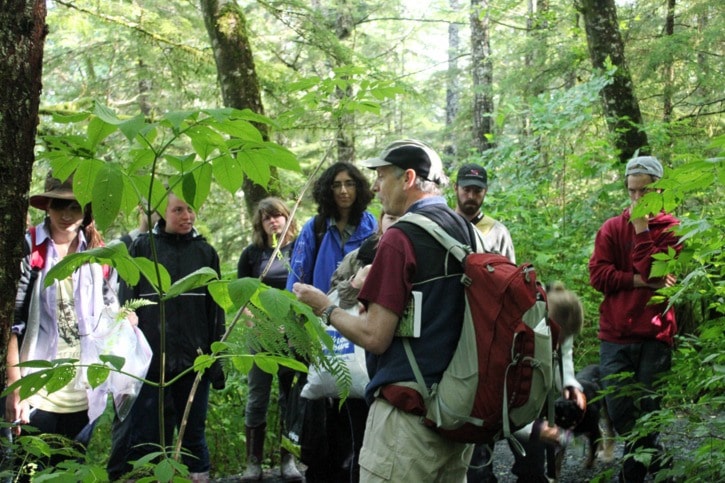Students from UNBC were on the North Coast last week to assess and document the biodiversity of the Skeena estuary near Port Edward.
A total of 16 students were in the old Cassiar Cannery area on August 27 and 28 with professor Dr. Darwyn Coxson and took measurements that included salinity, elevation and gradient.
“We found a great diversity of life at the site, which provides sustenance for much of the ocean nearby. The salt marsh and eelgrass beds provide critical habitat for juvenile fish, both for migrating salmon, where they provide a critical transitional habitat as the young salmon make the journey from fresh to saltwater habitats, and for many ocean fish, such as rockfish,” says Dr. Coxson.
“The salt marshes are also a vital habitat for migrating shorebirds and contain many relatively rare plants, such as the northern rice root, which was a major food source for local First Nations.”
As well as looking at the biodiversity in the area, the group looked at the role the estuary plays in terms of climate change and Dr. Coxson says it may be more important than people think.
“The carbon stores in BC’s estuaries may be greater than those in B.C.'s entire portion of the boreal forest, so they have major environmental significance,” he said.
“Of the major estuaries in western North America, the Skeena is the least well known. This data is very important to anyone concerned with climate change and the natural environment.”
The information gathered last week will be used as baseline data, with the plan being to return to the site every other year with a new group of students and track any changes taking place.
“This will provide updated data every year and allow us to determine how the environment is changing over time. We will be able to identify which species are growing in
number, which are declining, and at what rates,” said Dr. Cox.
